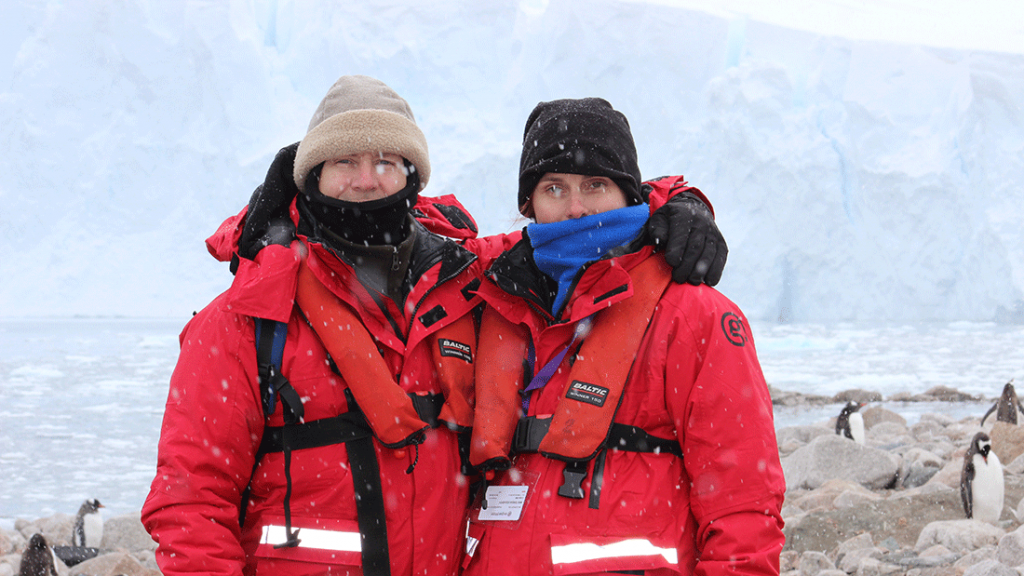It’s the coldest, driest and windiest spot on the planet, but for those lucky enough to reach the final frontier, the long journey and weather conditions are inconsequential to the wonders that await them.
According to the IAATO (The International Association of Antarctica Tour Operators), there were a total of almost 44,500 visitors to Antarctica over the past 12 months. Australian’s made up the third largest nationality. So, what is it about this beguiling continent that features on just about every intrepid traveller’s bucket list?
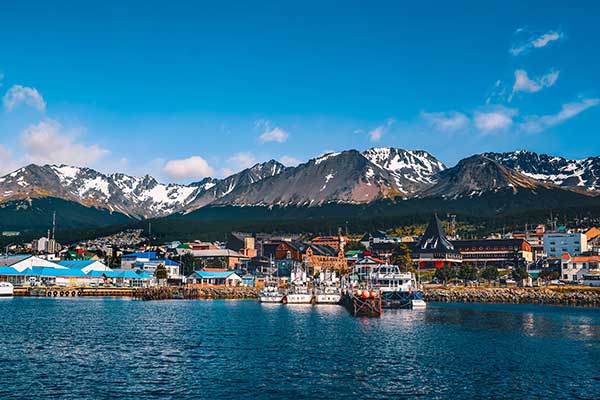 The majority of Antarctic expeditions depart from Ushuaia, the southernmost point in Patagonia. The adventure begins as you enter the Beagle Channel bound for the Drake Passage, an 800km crossing named in honour of the 16th-century English sea captain, Sir Francis Drake. The weather here is unpredictable and can often be rough and challenging. Some companies do offer the option to skip this crossing by flying directly from Ushuaia to the Antarctic Peninsula. However, the time on board is a fantastic opportunity to become acquainted with your ship and benefit from lectures and presentations given by the team of historians, marine biologists and naturalists. During the Drake Crossing, time on deck can provide sightings of whales as well as sea birds such as Light-mantled Sooty Albatross, Prion’s and Cap Petrels.
The majority of Antarctic expeditions depart from Ushuaia, the southernmost point in Patagonia. The adventure begins as you enter the Beagle Channel bound for the Drake Passage, an 800km crossing named in honour of the 16th-century English sea captain, Sir Francis Drake. The weather here is unpredictable and can often be rough and challenging. Some companies do offer the option to skip this crossing by flying directly from Ushuaia to the Antarctic Peninsula. However, the time on board is a fantastic opportunity to become acquainted with your ship and benefit from lectures and presentations given by the team of historians, marine biologists and naturalists. During the Drake Crossing, time on deck can provide sightings of whales as well as sea birds such as Light-mantled Sooty Albatross, Prion’s and Cap Petrels.
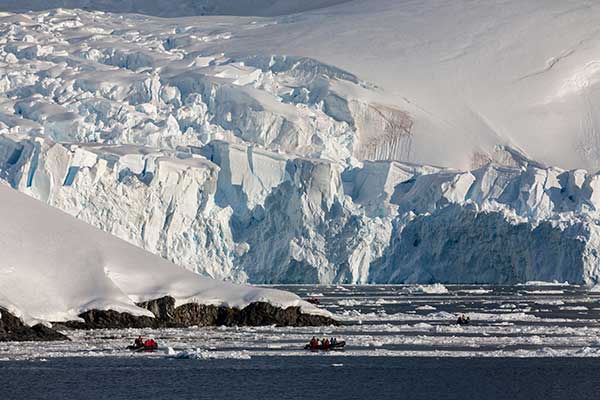 Your ultimate destination of the South Shetland Islands and Antarctic Peninsula is reached after 2 days of sailing. As you step onto the Antarctic continent for the first time, the awe inspiring scenery will no doubt take your breath away. Generally you will have around 4 days to explore (spending time between the ship and shore) navigating southwards stopping in the Shetland Islands and through the Bransfield Strait to the Antarctic Peninsula. when you reach In this time you will have the opportunity to encounter Gento, Chinstrap and Adelie penguins. Weddel, Crabeater and Leopard seals as well as Orca, Humpback and Minke whales. For those travellers keen to venture further afield, itineraries continue on to South Georgia (sometimes longer itineraries are in reverse, meaning South Georgia is visited prior to the South Shetland Islands).
Your ultimate destination of the South Shetland Islands and Antarctic Peninsula is reached after 2 days of sailing. As you step onto the Antarctic continent for the first time, the awe inspiring scenery will no doubt take your breath away. Generally you will have around 4 days to explore (spending time between the ship and shore) navigating southwards stopping in the Shetland Islands and through the Bransfield Strait to the Antarctic Peninsula. when you reach In this time you will have the opportunity to encounter Gento, Chinstrap and Adelie penguins. Weddel, Crabeater and Leopard seals as well as Orca, Humpback and Minke whales. For those travellers keen to venture further afield, itineraries continue on to South Georgia (sometimes longer itineraries are in reverse, meaning South Georgia is visited prior to the South Shetland Islands).
 The landscape is beautiful yet foreboding with gigantic glaciers and colossal icebergs. Kilometres of white and blue ice fields that stretch as far as the eye can see. As desolate as it may first appear, there is an abundance of wildlife, such as penguins, seals, whales and a variety of sea birds that have found a way to survive and thrive in this icy wonderland. When seriously contemplating a journey to Antarctica, we are all novices let’s admit. A few initial considerations include, how long do you want your expedition to be and what style is most suitable for you? Generally, the minimum length of any journey is around 11 days (unless flying some sectors). With increased accessibility to this region, there are now more companies offering ships from true adventure to total luxury – and everything in between.
The landscape is beautiful yet foreboding with gigantic glaciers and colossal icebergs. Kilometres of white and blue ice fields that stretch as far as the eye can see. As desolate as it may first appear, there is an abundance of wildlife, such as penguins, seals, whales and a variety of sea birds that have found a way to survive and thrive in this icy wonderland. When seriously contemplating a journey to Antarctica, we are all novices let’s admit. A few initial considerations include, how long do you want your expedition to be and what style is most suitable for you? Generally, the minimum length of any journey is around 11 days (unless flying some sectors). With increased accessibility to this region, there are now more companies offering ships from true adventure to total luxury – and everything in between.
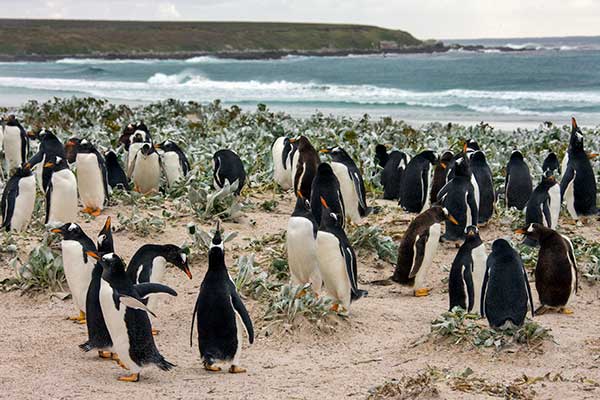 The Falkland Islands provides a rare opportunity to witness the biological diversity and amazing scenery of the southern islands. Again, penguins are abundant but it’s also home to the largest colony of Black-Browed Albatross in the world. It’s also here that you can meet the hardy locals (of the human kind) who brave some of the harshest conditions anywhere experiencing long, dark winters. Stanley is the capital and the colourful houses are a stark contrast to the chilly conditions. There are several war museums to visit as well as a bomb disposal unit from the Falklands War in 1982.
The Falkland Islands provides a rare opportunity to witness the biological diversity and amazing scenery of the southern islands. Again, penguins are abundant but it’s also home to the largest colony of Black-Browed Albatross in the world. It’s also here that you can meet the hardy locals (of the human kind) who brave some of the harshest conditions anywhere experiencing long, dark winters. Stanley is the capital and the colourful houses are a stark contrast to the chilly conditions. There are several war museums to visit as well as a bomb disposal unit from the Falklands War in 1982.
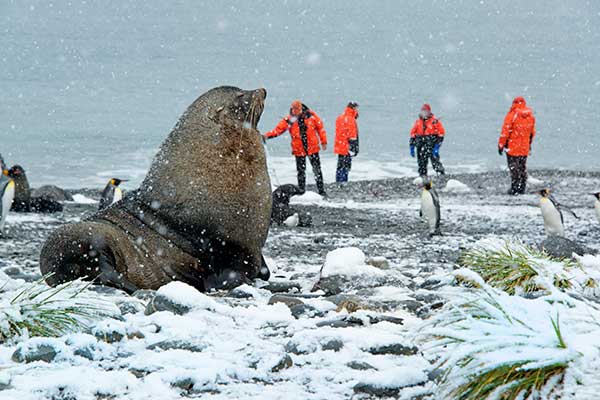 South Georgia has several former whaling stations and other interesting sites including the grave of polar explorer Ernest Shackleton. There is also a huge colony of King Penguins being a major highlight of this part of the journey. It’s also home to over half the world’s enormous Southern Elephant Seals – the largest of all seals. At certain times of the year, you may see newly birthed elephant pups. Pressing onwards the Falkland Islands are the next stop via the Southern Ocean.
South Georgia has several former whaling stations and other interesting sites including the grave of polar explorer Ernest Shackleton. There is also a huge colony of King Penguins being a major highlight of this part of the journey. It’s also home to over half the world’s enormous Southern Elephant Seals – the largest of all seals. At certain times of the year, you may see newly birthed elephant pups. Pressing onwards the Falkland Islands are the next stop via the Southern Ocean.
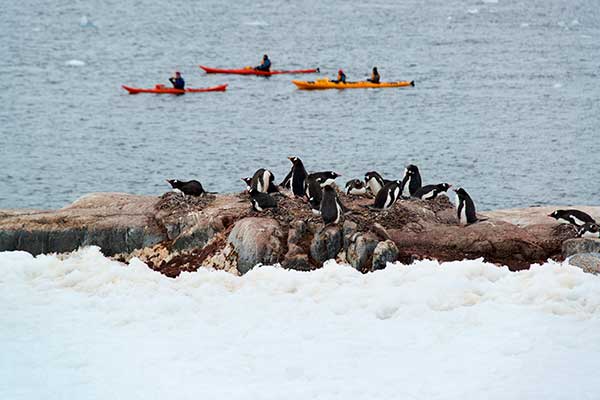 In addition to the already amazing experiences included in any length of itinerary, many operators offer even more options for adventure! These can include: Cross-Country skiing, snow shoeing, sea kayaking, camping on the ice, extended hiking and photographic excursions. For those brave (or silly people) you can even take a ‘Polar Plunge’. The one fact that’s undeniable, is that if you have the chance to visit this magical land – you should!
In addition to the already amazing experiences included in any length of itinerary, many operators offer even more options for adventure! These can include: Cross-Country skiing, snow shoeing, sea kayaking, camping on the ice, extended hiking and photographic excursions. For those brave (or silly people) you can even take a ‘Polar Plunge’. The one fact that’s undeniable, is that if you have the chance to visit this magical land – you should!
My journey started in Ushuaia the southern most town in the world in Tierra Del Fuego, Argentina. I boarded the Polar Pioneer a Finnish ice strengthened research ship that holds 56 passengers. My journey was to take in The Drake passage known to all that sail as the Drake lake or the Drake shake as it can be either a smooth crossing or a choppy crossing depending on weather.
Heading firstly to the Antarctic peninsula for amazing photographic opportunities at Paradise Bay and Lemaire channel viewing Whales, Penguins, Seals and numerous species of birds including the 3m wing span of the Wandering Albatross and well as magnificent icebergs and huge glaciers.
After a few days down on the peninsula we cruised to South Shetland Islands including Elephant Island then on to the breeding grounds for the Sub Antarctic Fur Seals, the Elephant Seals and King Penguin colonies of 80,000 on South Georgia Island where Ernest Shackleton the great explorer is buried. After a few days exploring there we headed for the Falkland Islands and the infamous Port Stanley(for all the wrong reasons) where we visited Sea Lion colonies as well as the Magellanic Penguins that live in burrows and some rare species of birds (ornithologists dream).
An amazing opportunity that everyone should experience once in their lifetime.
FAST FACTS
CRUISE TYPES
Apart from the standard of ship you choose, there are two very different cruise types to Antarctica. The larger ships generally offer longer cruises that are restricted to scenic cruising around the South American coast.
The majority of cruises we deal with offer smaller specialty ships that allow passengers to experience the Antarctic islands and the continent itself and tend to be more expedition style cruises.
MAIN PORTS
Larger cruise ships tend to depart either Valparaiso or Buenos Aires
Smaller specialty ships generally depart from Ushuaia, the most southerly city in the world located on Tierra del Fuego.
SEASONS & WEATHER
The Antarctic cruising season is during the Southern Summer months of October to March when the days are longer – up to 20 hours of daylight at the height of Summer.
Summer in the sub Antarctic still means the temperature on the continent rarely gets above freezing, but the days are pleasant non the less – as long as you wear the appropriate attire.
